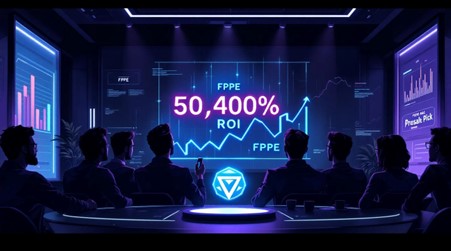YouTube videos and podcasts are some of the most popular sources for people who are seeking knowledge and information. The number of people learning and building their careers via these two platforms is mind-blowing.
But the only problem? Good videos and podcasts are quite long. And to be honest, they are long for the right reasons. If you want to share detailed insights on any topic, you have to create content that’s long and engaging.
We earn a commission when you buy through the links on this page. Affiliate disclosure.
This is where a lot of people face problems. Today, people’s attention span has reduced dramatically. In fact, the attention span that used to be around a minute in the early 2000s has not dropped to just 8 seconds in 2025!
Fast-paced life and the availability of information mean that people want to grasp as much information as possible in a short duration. And that’s where they miss out on a lot of useful information available on podcasts and YouTube videos.
Solution? A good YouTube video summarizer or podcast summarizer can be of great help here. Recently, there has been an explosion in the field. Hundreds of YouTube video summarizers have cropped up to help people grasp the crux of long videos and podcasts.
I’ll also break down the tech behind their operations and why people are vying for a good YouTube video summarizer or a podcast summarizer. Finally, I will also explain the limitations of such tools.
So, let’s dive straight into the crux.
On this page
People today consume more video content than ever, but retention is tanking. Long-form podcasts, expert interviews, and documentaries are goldmines, to be honest.
And viewers know this. But they have a lot of time constraints. Jobs, businesses, families, and more make it challenging for them to spare so much time and gather information.
But a good makes this friction disappear. It can crunch 30 to 120 minutes into short, skimmable notes without missing out on crucial information. You won’t have to replay the video of scrubbing back and forth to get critical information.
If you are a student, you can prepare accurate notes; if you are a manager, you can shorten your stakeholders’ talks and get important points. If you are trying to decode the webinars of your competitors, you can do so with a good YouTube summarizer.
Now, switch lanes to audio. Podcasts hit differently, but again, not everyone can afford the time to catch the full thing. A good podcast is always more than an hour long.
That’s where a reliable podcast summarizer can come to your rescue. It acts like chapter markers for your ears! Want to extract just the part where a guest talks about pricing psychology? Done with a single click.
Then, there is an issue of screen fatigue, too. Our screen time is increasing every day. People are spending time on their phones, laptops, TVs, and other gadgets a lot.
Intentionally or unintentionally, it’s hurting people. So, if there is an option where you can consume knowledge without straining your eyes, why not?
And that’s the reason why a lot of people are exploring options for a good YouTube video summarizer. Today, we are at a juncture where content is more than abundant, but time is scarce.
And we need something to fill that gap. And if you’re in a role where information fuels decisions, you can’t afford to ignore tools like a or a anymore.
Now that you know why a good YouTube video summarizer or a podcast summarizer works, it’s time to dissect the technology behind them.
At the core, it all starts with transcription. The summarizer first grabs the audio stream from your video or podcast. Then, it uses an Automatic Speech Recognition Engine or ASR engine, to analyze the audio.
The best examples of ASR engines are Google Speech-to-Text and Whisper. Once the text is ready, the Natural Language Processing process kicks in.
Natural Language Processing helps the tool identify:
Some summarizers use simple extractive methods. That means they pull out the strongest sentences and stitch them together. But newer tools go abstractive. They rewrite the content in simpler terms using LLMs like GPT-4 or Claude.
That’s what gives some YouTube video summarizers the ability to come up with human-like summaries and not some robotic gibberish that no one wants to read.
For tools, the challenge gets trickier. You’ve got speaker overlaps, background noise, filler words, and variable pacing. That’s why a good needs to do some more work.
It handles this with diarization. It’s a tech jargon for speaker separation! What it basically does is deploy algorithms to identify who said what and when. Tools like Snipd, Descript, and Notta are doing this well.
Now, back to the video. A modern won’t act like a pain-talking-head device. Some are so powerful that they can extract meaning and information from screen-share explainers, tutorials, or even interviews. They use visual cues, slide text extraction, or even OCR to boost accuracy.
The final layer is UI. A good YouTube video summarizer or podcast summarizer gives you a structured output:
This backend machinery is what makes a or a so powerful. It’s not just about saving time. It’s about structuring knowledge in a format your brain can actually process and use.
After dissecting the nitty-gritty of how this YouTube video summarizer and podcast summarizer work, it’s time to identify the most popular YouTube video summarizers and Podcast summarizers available in the market.

While Perplexity is not your standard YouTube video summarizer or podcast summarizer, it’s a combination of a summarizer and a search engine. You can paste a YouTube link, and it tries to fetch the transcript automatically. If it finds it, it works instantly as a .
Its layout is clean. You get highlights, clickable questions, and sometimes even source links. For public-facing content like interviews, explainers, or reviews – Perplexity pulls out major themes and lets you explore them like a mini research assistant.
It doesn’t yet support direct audio uploads, so it’s not a true in standalone form. But if your podcast is available on YouTube, Perplexity works well enough.
: Free; Pro plan $20/month
: Works only when the transcript is public. Not great with niche or private content.
: Quick overviews, general browsing, and auto-discovery of related questions.

Eightify is a browser extension built for YouTube users who want summaries right under the video. Once installed, it adds a “Summary” button under any YouTube video. Click, and you get bullet-point notes in seconds. No copy-paste. No manual work.
This is a true plug-and-play . It works well with tutorials, talks, how-to guides, and even news content.
You don’t need an account to use it, and it doesn’t pull you into external tools. Everything happens on the page. That’s what makes it popular among casual users.
Free; Pro plan $4.95/month
: It doesn’t work for podcasts or any content outside YouTube.
: YouTube addicts, students, or anyone bingeing educational videos with limited time.

Let’s switch gears to podcasts. Snipd is a dedicated that goes beyond notes. It actually creates audio “snips” of important moments. These are saved with titles, timestamps, and AI-generated summaries.
Snipd integrates with Spotify and Apple Podcasts. You don’t have to upload anything – just connect your podcast feed and start listening. As the episode plays, Snipd highlights key moments and stores them in your personal library.
I tested it with Naval Ravikant’s interviews and Tim Ferriss episodes. Snipd pulled out the gold – everything from startup wisdom to mental models – in just 3-4 lines each.
Free; Premium plan $6.99/month (billed annually)
: You can’t use it on YouTube videos. Audio-only.
: Podcast fans, productivity nerds, and people who build knowledge libraries from audio content.

Descript lets you turn any podcast or audio file into a transcript, summary, and video clip – fast. You upload the file, and it gives you editable text. Delete words in the transcript, and it edits the audio automatically. You also get AI-generated summaries with key takeaways.
It’s a strong if you create content regularly. It handles speaker detection and filler word removal and lets you extract key ideas in seconds. You can export summaries for blog drafts, newsletters, or internal recaps.
While it accepts video uploads, it doesn’t process YouTube links directly, so it’s not a true .
: Starts at $15/month
: Podcasters, editors, and teams who work with audio content.
: Requires manual uploads; no support for direct YouTube URLs.

Castmagic is a podcast summarizer + content automation system. Upload an audio file, and it gives you a full episode summary, timestamped notes, tweet threads, LinkedIn captions, and quote cards. This is built for creators who want to squeeze more value from each episode.
It’s great for weekly podcasters, solo creators, or brand builders posting across platforms. You don’t need to prompt anything. Castmagic automatically detects structure, voice, and key ideas.
It even lets you copy everything into Notion or Google Docs. You’ll have everything ready to publish in under 10 minutes.
: Starts at $39/month
: Personal brands, podcast-first content workflows.
: Works only for audio. No YouTube video summarizer support.

Notta is a versatile tool that transcribes audio and video content in real time, offering AI-generated summaries to streamline your workflow. You can use it as your podcast summarizer. It supports multiple formats and integrates with platforms like Zoom and Google Meet.
The Pro plan, at $13.49/user/month, provides 1,800 transcription minutes and 30 AI summaries monthly. For larger teams, the Business plan at $27.99/user/month offers unlimited transcription and advanced features.
Notta’s user-friendly interface and multilingual support make it ideal for professionals seeking efficient note-taking solutions.
: Pro – $13.49/user/month; Business – $27.99/user/month
: Professionals needing accurate transcriptions and summaries.
: The free plan offers limited transcription minutes and features.

Monica acts like a full-suite AI companion. You can summarize YouTube videos, PDFs, blog articles, and even search results. It runs as a Chrome extension and offers a mobile-friendly interface. The AI gives you short or long summaries, mind maps, definitions, and chat-based contextual answers.
The Pro plan ($8.30/month) covers 5,000 basic and 200 GPT-4 tasks monthly. The Unlimited plan ($16.60/month) removes usage caps for heavy users. Monica also supports prompt customization, so if you prefer bullet points, chapter summaries, or definitions, just ask.
It’s ideal for researchers, content curators, and anyone who reads across formats. You get a fast turnaround and a visually clean output. You can also switch between models – GPT-3.5, GPT-4, Claude – for different styles of summaries.

: Pro – $8.30/month; Unlimited – $16.60/month
: Multi-format summarization (video, web, docs).
: YouTube summaries work only with public URLs.
Summarize.tech gives you instant summaries of YouTube videos by pasting the video URL. It scrapes the transcript and processes it into paragraph-based or bullet-form summaries. It’s great for webinars, long talks, explainers, and interviews.
The Premium plan costs $10/month and allows up to 200 detailed summaries per billing cycle. It doesn’t store data, so each summary is on demand. There’s no login required – just paste and go. It also works with some non-YouTube URLs if transcripts are embedded, but YouTube is where it performs best.
This tool is ideal for students, analysts, and bloggers who consume a lot of niche video content. You can share, export, or save the summaries manually. Just don’t expect visual analysis – it’s transcript-based.
: Premium – $10/month
: YouTube watchers who need instant summarization.
: No batch export or login history to revisit old summaries.

The summarizer tools mentioned above offer amazing flexibility to the users. Now, let’s understand how you can summarize like a pro using the YouTube summarizer and podcast summarizer.
This is the most important step. Go with something simple and effective. If you really want to get good results, don’t look too much at the price. Each summarizer tool takes a different angle while trying to create a summary for you.
So:
Each has a different approach, so your use case decides the winner.
Don’t rely on messy auto-captions. They are notorious for coming up the crappy transcripts, especially when the videos have accents, the audio quality is poor, or the speakers are fast. You can use tools like Whisper, Otter.ai, or Descript to transcribe. That clean text becomes the base for all your summaries.
If you have a clean transcript, your podcast summarizer or YouTube video summarizer can quickly identify topic shifts, emotion-heavy sections, and good content. Without that, you’ll get flat summaries with no context.
Different tools offer different formats:
For quick memory refreshers, go bullet. For content repurposing or blogs, use paragraphs. A professional lets you export in multiple formats – use that power.
Timestamped summaries are underrated. Let’s say you want to revisit that 3-minute nugget where the guest explains pricing strategies. You don’t have to scrub the whole timeline if you are using timestamps.
A proper shows you where that gem is and lets you jump right to it.
Snipd does this natively. With Descript, you can mark timestamps during playback.
This is very important if you are listening to podcasts regularly. Don’t let summaries sit in a folder. Use tools that let you save or organize them, like Snipd’s “Snips.”
Over time, your becomes a searchable knowledge base. That’s how researchers, newsletter writers, and even VCs keep up with ideas without re-listening every week.
Not every or works perfectly. These tools are smart. But sometimes, they do miss out on a few critical points. But they still miss a few critical marks. Let’s call out the limitations clearly – so you don’t walk in blind.
- Visuals like charts, gestures, and screen shares get ignored unless you add explanations manually.
- Timestamps can miss the mark, so always verify before relying on them.
- Free tools might store your private uploads and use them to train their models.
- Podcast summarizers won’t process YouTube videos, and YouTube tools won’t handle podcast feeds.
You’ve got the tools. You’ve seen the use cases. Now the question is – what works best for your workflow?
If you mostly deal with long-form YouTube content – like interviews, tutorials, or explainers – go with for speed. Both handle public videos well and need almost no effort to get started.
If you prefer full control over tone and format, use ChatGPT as your custom with a clean transcript.
For podcast fans, should be your default. It doesn’t just act as a – it builds you a personal audio knowledge base.
If your use case involves repurposing podcast episodes into content, slide decks, or reports, tools like give you structured, editable summaries that feel human-written.
Here’s a quick match-up to help you decide:
| YouTube (via transcript) | Quick overviews, browsing | Free | Only works with public transcripts | |
| YouTube only | Casual YouTube users, students | Free (Chrome extension) | Doesn’t support podcasts or external URLs | |
| Podcasts (Spotify, Apple) | Podcast listeners, knowledge capture | Free with optional paid upgrades | Audio-only, no YouTube support | |
| Audio & video (manual upload) | Creators, personal brands, and podcast workflows | Starts at $15/month | Manual uploads only, no URL summarizing | |
| Audio (uploads) | Students, analysts, and content consumers | Starts at $39/month | Audio-only, no YouTube support | |
| Audio & video, live transcription | Professionals, teams, transcription + summaries | Pro $13.49/user/month, Business $27.99/user/month | The free plan is very limited | |
| Monica | YouTube, PDFs, Web | The free plan very limited | Pro $8.30/month, Unlimited $16.60/month | Only works with public YouTube URLs |
| Summarize.tech | YouTube (public transcript) | Students, analysts, content consumers | Premium $10/month | No account history or batch export |
The days of you trying to watch every video to its end are gone. Yes, if you can spare time, you must surely watch it. But if you can’t, your favorite YouTube video summarizer or Podcast summarizer can do the job for you.
They will handle the bulk and deliver to you the core idea and information of the video. And that’s all you need to collect all the information, right?
The best YouTube video summarizer or podcast summarizer is the one that fits your speed, your tools, and your brain. Try a few, tweak your process, and lock in what works.
I hope this blog has cleared all your doubts regarding the YouTube video summarizer and the podcast summarizer. If you liked this blog, feel free to explore our website. I regularly post a lot of stuff there. You will surely find it interesting and worth your time.
Till then, enjoy your YouTube summaries and podcasts with amazing tools!
No. Most tools need public videos with transcripts. For private content, you’ll have to upload the file manually into a tool like Descript or Notta.
Only some do. Snipd supports Spotify and Apple Podcasts directly. Others may require you to upload audio or use an RSS feed.
They’re good for quick takeaways but often miss context or tone. Paid tools offer better accuracy, formatting, and customization.











